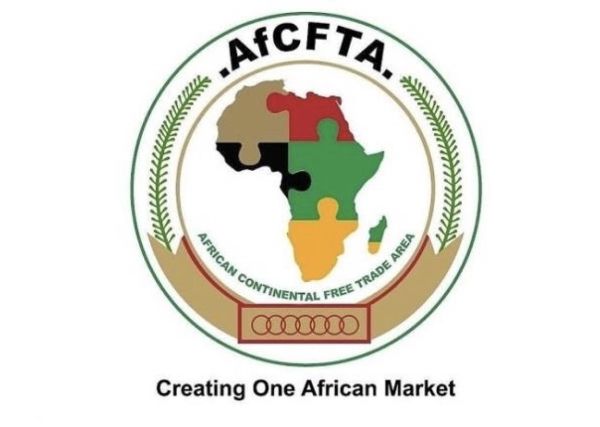PAMA Survey Signals Strong SMI Readiness for AfCFTA — But Structural Barriers Remain

A landmark survey by the Pan African Manufacturers Association (PAMA) has revealed that 96% of Nigeria’s Small and Medium Industries (SMIs) express readiness to engage in intra-African trade under the African Continental Free Trade Area (AfCFTA) agreement. However, the report also underscores critical gaps in infrastructure, financing, and operational awareness—factors that may limit the realisation of this optimism.
The findings were disclosed in a statement on Sunday by Mr. Mansur Ahmed, President of PAMA and one of Africa’s most influential industrial advocates. The survey engaged 207 respondents across strategic manufacturing sub-sectors, including food and beverages, textiles, plastics, rubber, and chemicals—sectors considered vital to driving Nigeria’s industrial diversification and regional trade competitiveness.
🧩 The Dual Narrative: Readiness Meets Reality
While the survey headline reflects broad enthusiasm for AfCFTA, a deeper dive into the data tells a more nuanced story:
- 34% of SMIs identified infrastructure and logistics gaps—such as poor road networks, inconsistent power supply, and high transport costs—as major obstacles to market access across African borders.
- 22% cited access to finance as a significant constraint, a longstanding bottleneck for scaling local production to meet continental demand.
- Worryingly, 26% of SMIs admitted being completely unaware of AfCFTA’s operating mechanisms, revealing a knowledge and capacity gap that could cripple real participation.
“Many SMIs view AfCFTA as a passport to bypass fragmented national markets,” said Ahmed.
“But without deep understanding of its protocols, rules of origin, and compliance standards, these enterprises may be locked out of real benefits.”
🌍 Context: AfCFTA and Nigeria’s Industrial Ambitions
AfCFTA, the world’s largest free trade zone by population (1.3 billion people) and GDP (over $3.4 trillion), promises to remove tariffs on 90% of goods and eliminate non-tariff barriers, creating a single African market. But for Nigeria’s SMIs—the backbone of local manufacturing and job creation—the real test lies in integration, not mere enthusiasm.
SMIs account for over 90% of Nigeria’s industrial base, yet they face formidable headwinds: limited access to affordable credit, outdated machinery, inadequate export infrastructure, and exposure to unfair competition from larger, better-funded multinationals.
AfCFTA could help unlock continental demand—but only if SMIs are strategically supported with the tools, training, and policies to thrive in a competitive regional arena.
🛠️ Policy Prescription: What Nigeria and Africa Must Do Now
According to the PAMA Survey, unlocking SMI value under AfCFTA will require a multipronged approach:
1. Infrastructure Investment
Ports, roads, rail, and electricity must be upgraded to reduce the cost of production and cross-border trade. Logistics is the artery of intra-African commerce.
2. Capacity Building and Awareness
With a quarter of SMIs unaware of AfCFTA’s mechanics, intensive education and outreach campaigns must be rolled out by trade ministries, export councils, and business chambers.
3. Access to Finance
Innovative trade financing mechanisms—such as AfCFTA-linked credit guarantees, export grants, and development bank-backed loans—are needed to scale up SME production and competitiveness.
4. Regulatory Protections and Fair Competition
PAMA rightly calls for robust regulatory safeguards to ensure SMIs are not overrun by multinationals exploiting open borders with cheaper imports and economies of scale.
5. Technology Adoption Incentives
Ahmed pointed to successful examples in China and India, where government-led digitisation, R&D incentives, and tech clusters helped micro and small manufacturers leapfrog their constraints.
📊 BRANDECONOMY OUTLOOK: AfCFTA is a Game-Changer—But Execution is Everything
Nigeria’s manufacturing future under AfCFTA hinges not on whether SMIs are willing, but on whether the environment is enabling. With nearly all SMIs signalling intent to trade, the onus now falls on government, financial institutions, and industrial clusters to connect this intent with action.
If done right, Nigeria could emerge as AfCFTA’s industrial engine—boosting exports, reducing unemployment, and diversifying away from crude oil dependency. But if bottlenecks persist, this once-in-a-generation opportunity could slip through the cracks, reinforcing old patterns of underperformance.
🚀 Final Word: From Readiness to Results
The PAMA survey sends a clear message—Nigeria’s SMIs are ready, but not equipped. The real work now lies in translating policy frameworks into business-ready ecosystems. Without bold interventions, AfCFTA risks becoming a high-speed train with local manufacturers stranded at the station.
As Africa integrates, the race is not just to open borders, but to empower those who cross them.
Stay with BRANDECONOMY for trusted business intelligence, trade insights, and SMI-focused economic analysis as Nigeria navigates the opportunities and challenges of continental integration.
4o











